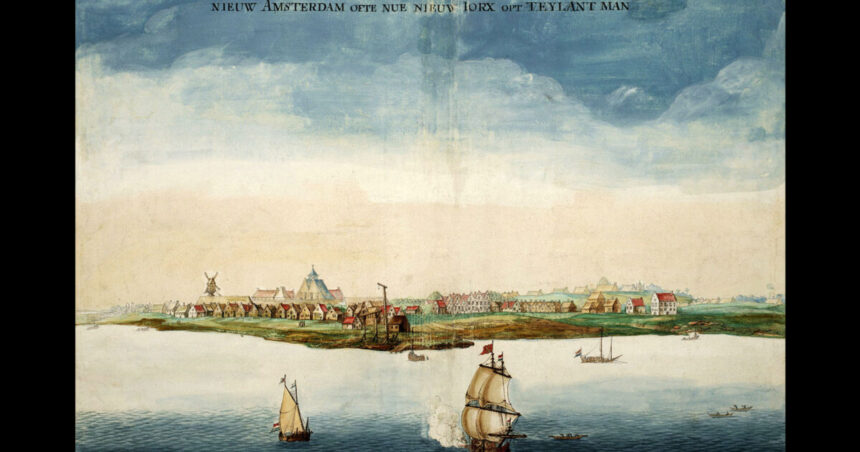New York’s cosmopolitan character has its roots in the Dutch merchants who first took control of the area and the city’s suburbs. New Amsterdam, as New York was originally called, gained city status 371 years ago, when it was still a settlement on the southern tip of Manhattan Island with about 800 residents, who already spoke 18 different native languages.
The Dutch were the first to realize the value of the Hudson Bay area and adjacent coasts for trade in the early 17th century. From 1610 onwards, the Dutch, having sent expeditions to explore and map the region between the Delaware and Connecticut rivers, named it New Netherland and claimed it for the Dutch Republic. In 1521 the new Dutch West India Company was given a 24-year charter to exploit Dutch land in the west, including this area.
The beginning of its cosmopolitan character can be considered the moment when the first non-native American chose to stay and trade on the island of Manhattan; but he was not Dutch. Juan Rodríguez, who is now recognized as an iconic figure of New York as he is considered the city’s first immigrant, was a young man from Saint Dominic, the son of a Portuguese sailor and an African mother. Being adept at learning languages, he worked as a translator for one of the Dutch explorers, Captain Mosel. When the latter prepared to leave the Hudson Bay area in 1613, Rodriguez decided to stay. Beginning a life based on hunting initially and trading, he would quickly learn to live with the local inhabitants, the Lenape.
As time passed, further trading posts were established along the coast, settlers began to become tenants, and so by 1625 the settlement of New Amsterdam had slowly been established on the southern shores of Manhattan Island.
However, a series of incompetent and at the same time unscrupulous Directors-General sent by the West India Company to the region caused periods of unrest and fluctuations in its population. This situation would continue until the late 1640s, when Peter Stuyvesant provided the necessary stability for the community’s prosperity and growth. It would be during his tenure as Director-General that New Amsterdam finally gained the municipal rights of a city, on February 2, 1653, and was consequently awarded its own seal as a recognized city.
But the prosperity would be short-lived. All this time the English had never relinquished their own claim to that particular area. When Charles II ascended the throne in 1660, he promised the entire Dutch territory to his brother, the Duke of York (and later James II). In 1664, the royal promise finally came true. Under the menacing presence of four English warships in the harbor of the newly recognized city, New Amsterdam would surrender peacefully on September 8. In honor of the Duke of York, it was renamed New York, and today it is an iconic metropolis of the United States.
Column editor: Myrto Katsigera, Vassilis Minakakis, Antigoni-Despina Poimenidou, Athanasios Syroplakis








